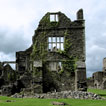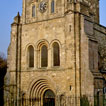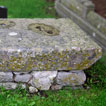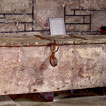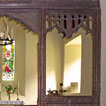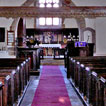The Reformation
When Henry VII decided to break from the pope so that he could annul his marriage to Catherine of Aragon and marry Ann Boleyn, he set in train a course of action which was to have a profound effect on the church in England and Wales. Although Protestantism was beginning to make a stir in Europe, and England had produced its own home-grown proto-Protestants in the shape of the Lollards in the 15th century, Henry himself was a devout Catholic and had no intention of changing patterns of worship in the parish churches. Monasteries were however a different matter. Henry needed money to support his wars with France, and the monasteries, which no longer kept to their original ideals of poverty and communal living, were an easy target, no longer effectively defended by Rome. All monasteries had been dissolved by 1539, their buildings and lands seized by the king's commissioners and usually sold on to local gentry, who often used the monastic buildings as the basis of grand new houses for themselves.
Separate Acts of Parliament were passed to close all the chantry chapels that had been established so that masses could be said for the dead, and to seize all their endowments. Both chantry priests and monasteries had had a significant role in running schools, so this created a gap that was eventually filled by the creation of secular grammar schools.
Henry died in 1547 and was succeeded by the nine-year old Edward VI, with his uncle as regent. A true Protestant revolution now began. A purge began to free parish churches of features that were considered idolatrous. This involved taking down roodscreens and images and burning them, and covering wall-paintings of saints in whitewash.
However, Edward died young and his eldest sister Mary became queen. Mary had remained staunchly Catholic, and she instructed all the churches in her realm to replace all the images and other equipment. We know from documents kept in some parishes in England that the parishioners started to take out of hiding what they had been able to keep from the commissioners, but a lot had been destroyed and had to be bought new.
Mary also died without children, and the throne passed to her sister Elizabeth. Elizabeth was protestant, but not as hard-line as Edward. Although overtly Catholic objects had to be removed from the churches again, Elizabeth's legislation was not so draconian.
Charity by the monasteries had been the main source of help for the poor. When they were dissolved and their funds confiscated, the state had to find other ways to deal with the problem of people who were unable to keep a roof over their heads or food on the table. The solution was the Poor Laws – parishes now had to raise and administer rates to support these expenses through an organisation based around the church. These new responsibilities contributed to the parish as a recognised unit of local government.
